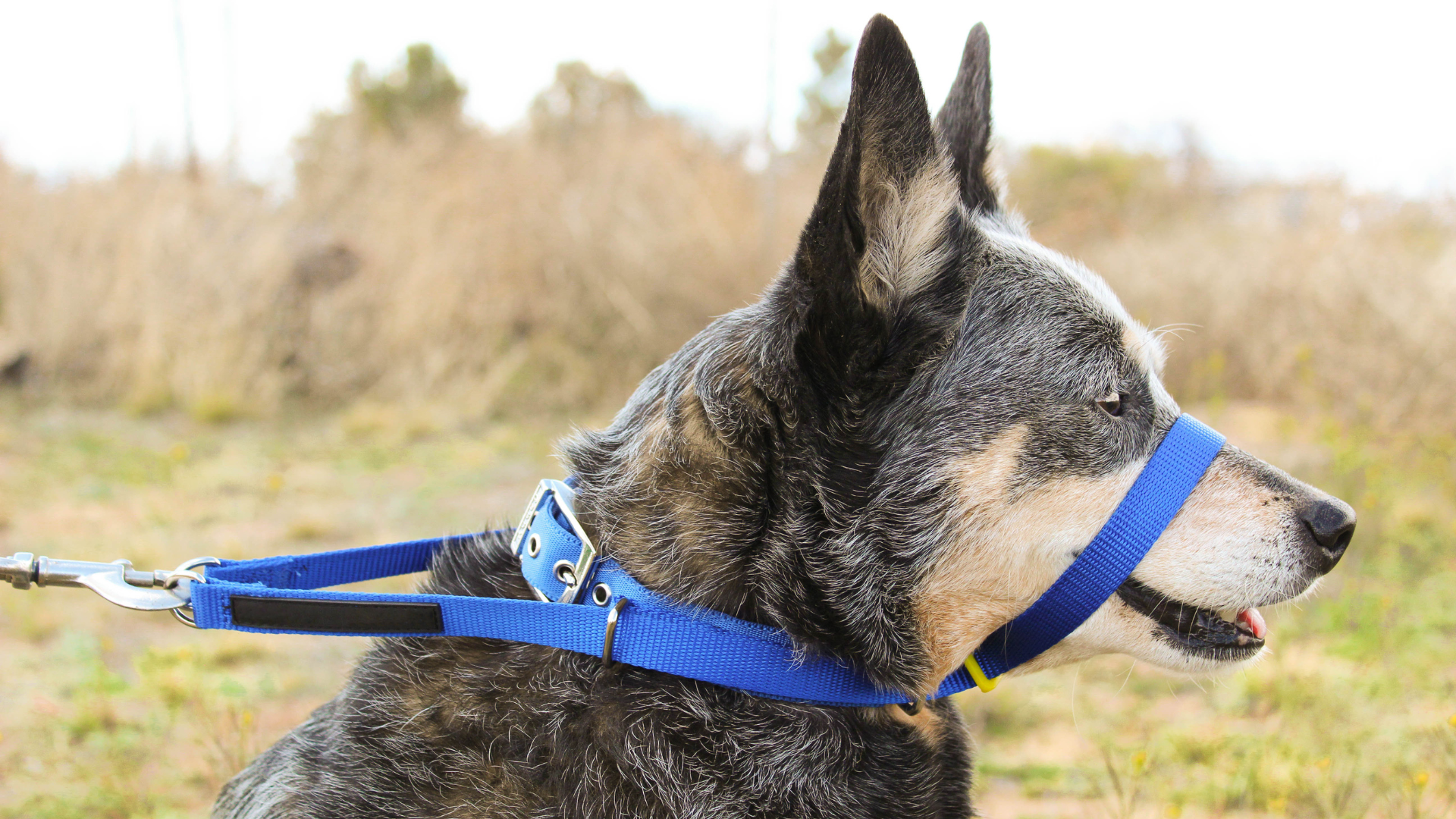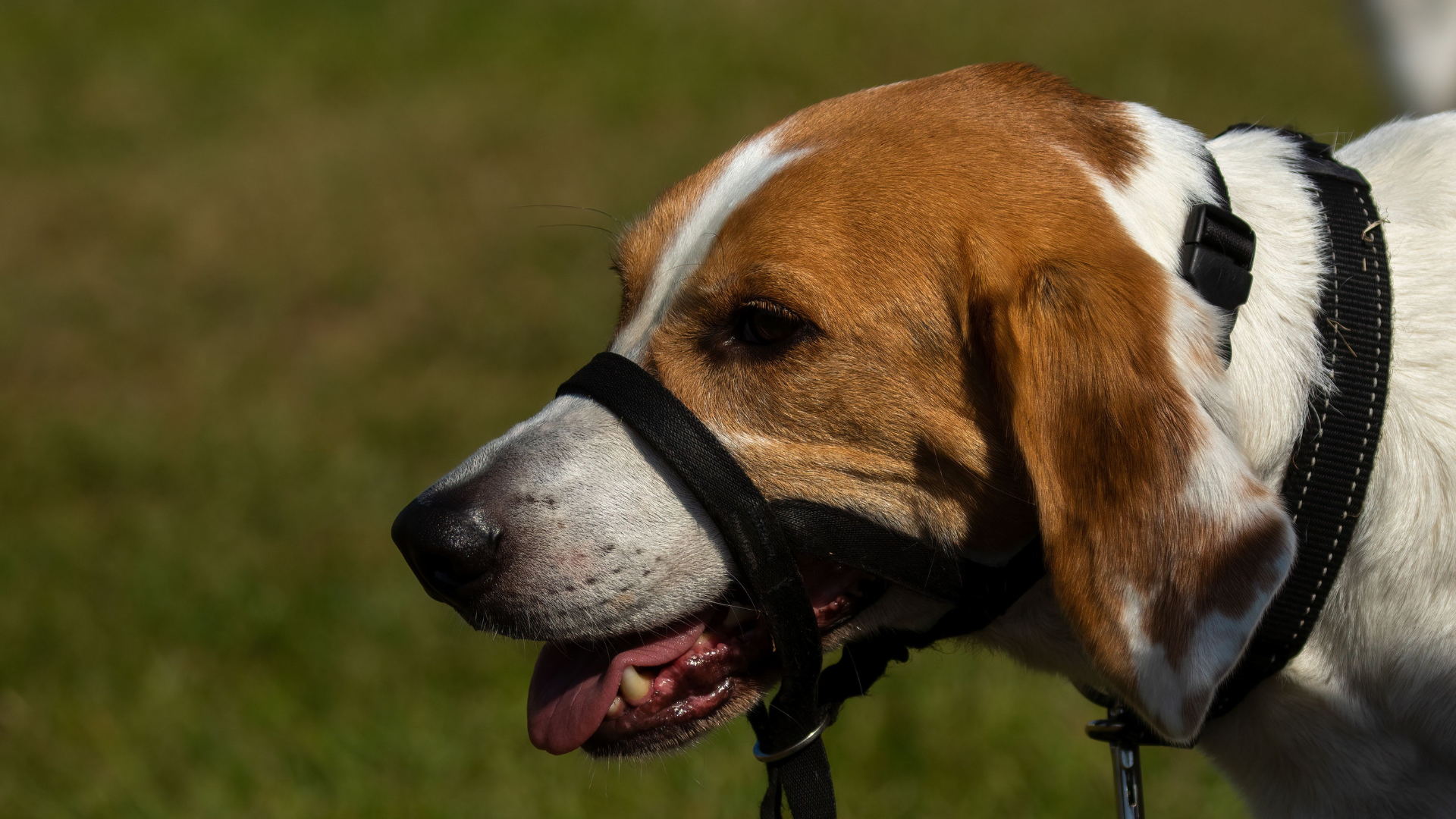
Head halters for dogs are quite the contentious subject! As a dog parent, you might be weighing up whether to walk your dog on one of the best dog harness or a head halter to be able to have more control on your walks. As an ethical, force-free trainer and certified animal behaviorist, I’m here to share my insight into these tools and whether they are something to utilize on your walks.
I personally only employ methods that promote positive experiences for our dogs, as well as ensuring their wellbeing is respected. However, I understand that for some pet parents, a head halter might be an easy way to get back to enjoying walks - especially if they have a large breed that tends to pull or has any emotional reactivity needs on walks.
Head halters, also known as head collars, are often a topic of debate among pet parents and trainers. On one hand, head halters can offer a more humane alternative to more punitive tools such as choke chains or prong collars if the guardian is looking for a ‘quick fix’ to save their relationship with their dog.
However, these halters must be used correctly and with proper training to ensure they don't create discomfort, fear, or anxiety in dogs. Improper use or a poor fit can lead to physical issues and can exacerbate behavioral problems if the dog associates the halter with negative experiences.
I’m going to explore this topic further for you here - looking at the potential benefits and clear downsides of head halters, discussing when they might be appropriate, and how to use them in a way that aligns with force-free training methods. Read on to learn more about head collars and if they’re right for you and your dog.
Are head halters for dogs ethical?
As a behaviorist, my main focus is to prioritize the emotional wellbeing of the dogs I support. If you’re considering a head halter over different types of dog harnesses, I believe careful consideration should be taken. While head halters can be effective in their management of strong pullers or dogs who struggle with reactivity, the decision for their use must be balanced with the dog’s comfort and emotional state in mind.
If a head collar is introduced too quickly (by simply placing it on the dog and going straight for a walk) or if it's poor-fitting, can be stressful for your dog. If you're going to use one, it is crucial to ensure that your dog only associates the halter with positive experiences and, preferably, that it is used as a temporary tool alongside training.
Many halters will move around on the dog’s face - which can mean they cause pressure on the sensitive eye area or around the nerves in the dog’s nose. They can also impact how the dog appears to approaching dogs, causing harsh lines on their face which could be mis-read for tension. We have a complete guide on dog body language.
Are head halters good for reactive dogs?
When it comes to reactivity in dogs, we want to focus even more strongly on them feeling the most relaxed they can when out in the world. Whilst a head halter can provide the guardian with a sense of control, they might be making the dog feel less at ease.
Two-point harness are an alternative option that gives you connection on the front and back of your dog’s body. If you really feel the need for a head halter in the early days of working on your dog’s behavior, you could combine these two options.

Can a dog bite with a head halter on?
While a head halter has been designed to give an element of control over a dog's head movements - mainly by reducing pulling - it does not completely restrict the dog's mouth from opening. If a dog feels threatened, it can still bite while wearing one.
If bites are a risk with your dog, it is advisable to work with an ethical and experienced dog behavior practitioner to be able to introduce a muzzle for them to positively wear.
How do you introduce a dog to a head halter?
If you make the decision to use a head halter, it’s vital that you slowly introduce your dog to wearing it. Firstly, make sure that the head halter is going to fit your dog properly. Look for a halter that allows you to lock the fitting in place, so the tightness doesn’t vary during wearing. This will help to reduce the chance the halter will move up and down into the delicate eye area.
1. Start simply by showing the halter to your dog and giving them time to take it in. Provide food rewards, like the best dog treats, when they look at it or move towards it or show any interest.
2. Initially work on your dog's nose targeting the halter so they can pop their nose through the opening without you strapping it around their head.
3. Once they’re comfortable with this stage, you can then build up to attaching the halter properly, but don’t hold the leash. Ideally, have them wearing it without a leash attached first so you can introduce play, training games, or comfort (depending on what your dog’s preference is) while they’re wearing it as a positive association.
4. Finally, start by lightly holding the leash while following your dog around your home or yard. Don’t put any tension on the leash in the early stages.
Not convinced by a head halter but struggling with why your dog hates their harness - read our top tips. And if you’re wondering how to use a harness on a dog, this guide can help.







